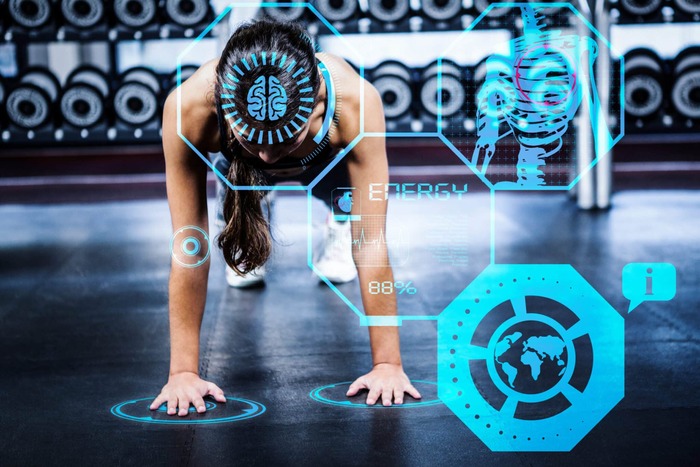How Technology is Changing Training and Performance in Sports
Nowadays, almost every sportsman is thoroughly monitored, even the health professionals have a tab on them. It is evident that extensive use of technology has transformed not only the typical practices, but also the techniques that are utilized to develop skills and train them.
The athletes’ peak performance has greatly benefitted from enhanced tools such as virtual reality, artificial intelligence, and data analysis, much like how technology has revolutionized bangercasino.org with real-time gaming and personalized experiences.

Along with these enhancements, coaches were able to innovate life-saving strategies and injury prevention. These new developments ensure that athletes are properly pushed, while their safety is maintained.
You are no longer limited to the chronic tools such as coaching that accompanies sports. You are equipped with modern training programs that can give real-time information, personalized training, and more.
The Digital Transformation of Athletic Training
As for now, sports professionals seek technology-infused performance enhancements, rather than development of basic drills. Educators have begun to realize that each learner is an individual with unique ways of learning.
These educators employ fitness monitors, trackers, and belts that can monitor heart rates. These devices measure important factors such as sleep, how much energy a person uses, and heart rate to lessen the workload and permit reasonable changes to intensity.
The adoption of data analytics is one of the most significant changes in this process. Advanced technologies such as machine learning and AI have made it possible for teams to study huge volumes of performance data to discern trends relating to fatigue and the likelihood of injury.
For example, an athlete’s heart rate and oxygen consumption can be monitored in real time to ascertain whether they are coming close to their lactate threshold, a point that indicates the intensity of the workout may need to be adjusted.
The value of this approach goes beyond performance enhancement; there is a strong argument to be made for its relevance in injury prevention.
Enhanced Performance and Individualized Training
One of the biggest areas of progression in sports technology is in the crafting and application of individualized training programs.
Generic training modules are being phased out in favor of more precise and targeted plans that consider the unique physiological responses, genetics, and performance history of individual athletes.
Thanks to AI and sophisticated data analysis, coaches are now able to design tailored workouts to capitalize on the athletes’ strengths and mitigate their weaknesses.
To refine their training and recovery schedule, a cyclist training for a major race, for instance, can make use of sophisticated algorithms that assist athletes and coaches when hard data such as power output, cadence, and heart rate variance is monitored with sensors in real-time.
Personalized plans can ensure peak performance whilst reducing the risk of overtraining and injury for the athlete.
Augmented Reality, Virtual Reality, and the Fusion Experience
The use of Augmented Reality (AR) and Virtual Reality (VR) in sports training is set to transform how coaches and athletes interact with and approach training. With AR and VR, athletes can now train in immersive environments that stimulate gaming where the physical space isn’t a limitation.
A perfect example of an AR application is where soccer teams simulate match conditions with players by allowing practice of tactical decision making and movement under pressure.
AR enhances the real-world training experience by overlaying real-life training with hyper relevant information.
A good example would be a runner performing on a track and receiving real-time feedback that shows their speed, stride, and breathing patterns integrated within their peripheral. Such systems that integrate AR into sports training would enable athletes to make real-time adjustments.
The Impact of Artificial Intelligence on Athletes Training
Many technology innovations involve the use of artificial intelligence (AI). In the context of sports training, AI systems can model different training options, estimate an athlete’s performance outcomes, and even recommend specific recovery strategies.
For example, AI models can scan training records to identify trends pertaining to fatigue accumulation and the associated risks of injuries. Adjustments to training programs can then be applied, which helps to guarantee that every training session is difficult, but also safe and injury free.
AI is progressively changing game design and video game creation for the purpose of sports simulations. AI helps create realistic dynamic environments and a range of opponent behaviors, so athletes can train in virtual reality settings that closely mimic real-life situations.
Such simulations are helpful in improving the athlete’s performance, and also in training the athlete to meet and deal with unforeseen problems during competition.

Promoting Collaboration in Sports and Multi-Athlete Training
Technological influence is seen at the individual level and also at a collective level. For example, in basketball football and hockey, there has been a shift towards using more advanced data breaks to plan for the entire team’s game strategy.
Coaches can use the analytics generated in a game to make tactical changes during the game, like shifting a defense or changing bowing orders. These collaborative changes enhance the effectiveness of the entire team by ensuring that all members perform as required.
Consider a particular playoff game where a coach decides to implement a tracking system of all his players through wearables. With these devices, he or she will know whether his or her players are indeed fatigued or not.
With this information, a proper decision can be made on substitutions or rotations that assist the team efforts in winning or going on winning streaks. The integration of other advanced technologies in team sports reduces the stride of relevance from the coaches to the players in this age of marketing sport.
Next Steps In Sports Training: What To Look Forward To
Broader Deployment of Artificial Intelligence and Machine Learning in Training Regimens
Undoubtedly, AI and other industrial technologies will, in due course, influence the training of sports personnel. Such AI technologies will be able to provide detailed analysis of an athlete’s performance as they continuously improve.
They will be able to analyze an athlete’s biomechanics, predict the possibility of an injury, and make extraordinary personalized recommendations.
With the augmentation of AI and machine learning, coaches will be able to optimize an athlete’s training regimen to such a degree that the athlete’s performance will exceed expectations.
Wearable Technology And Active Fitness Trackers
Technology is now hands-free, and with each new pedigree, devices are becoming more sophisticated and streamlined. An even greater emphasis will be placed on tracking an individual’s physical activity in real time by the year 2025.
Advanced sensors will track heart rate variability, muscle oxygenation, sleep, and recovery to give comprehensive details about the individual’s health. This kind of information could be instrumental in improving training while minimizing the chances of sports injuries.
Let’s take a look at some of the newer developments that hybrid learning has offered to sports and exercise training.
Augmented Reality and Virtual Training Environments
It’s very likely that sports training in the future will utilize virtual reality alongside augmented reality. Athletes will train in an environment that has representations of the competition, while also being able to give real-time feedback AR overlays to the athletes in realtime.
Athletes will also change their VR environment to have the fully immersive experience of a simulated crucial basketball game. This makes training much more fun as well as helps in enhancing athletes’ performance in competitions.
Enhanced Recovery and Sports Injury Management
Another major focus in the sphere of sports training is injury issue management, and the application of technology has greatly improved this sector. Wearable devices capture real-time information and identify signs of fatigue and biomechanical misalignments that, if noticed in time, can be corrected.
AI can also analyze the training volume and the movements of an athlete and predict the chances of injury. Also, these days faster and longer recovery is assisted with advances in cryotherapy, compression equipment and other aids.
Together, all of these technologies integrated within everyday training practices reduce the risk of injury and extend the career span of the athlete.
The Social Influence of Technology In Relation to Sports Performance
Comparative Sports Monetization and Simulation Evolution
Technology’s impact is visivble not just in training and performance enhancement, but in the entire sphere of sports.
Every facet of sport has been revolutionalized technologically giving rise to new prospects and the emergence of unrivaled business models, broadcasting abilities, and shifts in paradigms of betting.
The implementation of real-time data analysis has simplified sports betting. Fans’ experiences have also been enhanced thanks to Artificial Intelligence.
Now, fans can fully appreciate the competitive sports world because their favorite athletes can effortlessly livestream training sessions, share clips, and engage with their audience on various platforms such as YouTube Gaming and Twitch.
Empowering Coaches and Athletes For Better Training and Performance
Thanks to technology, athletes today can easily access world-class training modules and performance data. Coaches and trainers are more informed that ever before, and every decision made is backed up by data.
This helps in comprehending the anatomy of the human body, which permits athletes to train and perform at their highest level.
Technology continuously strives to empower athletes and coaches to perform at their highest level, whether it is through advanced recovery tools or integrated biomechanical analysis.
Crafting What’s Ahead for Sports and More
Like in almost every other field, the evolution of technology has had, and will continue to have, a profound impact on sports.
Sports training in the future will consist of AI, wearables, and virtual reality devices readily available to work in unison. In addition to performance, these technological advancements will improve people’s overall experience in sports, including the spectators.
The advanced data analytics will generate insights that will inform everything from game strategy to fan engagement, as well as enrich a new, integrated sports ecosystem.
Conclusion: Technology Has Transformed Productivity and Creativity
There is no denying the technology’s revolutionary influence on sports training and performance. The embodiment of AI, wearables, and virtual platforms makes it possible for athletes and trainers to maximize human performance and pushes the limits of achievement.
The automation of analytics as well as individualized training strategies are improvements on older systems that help athletes deal with the many factors affecting their training while minimizing injuries.
The world of sports receives further enhancement along with the situation of the integrated tools and what it means to perform at the highest level. These integration tools when blended into one will assist in optimizing sports practice.
The prospective reality of smart sports training is data-centralized, individual-focused and highly creative, and this reality will change how athletes train, perform, and soar to elusive success.
These innovations are highly impactful and, enabling athletes, trainers, and spectators to fully participate in a dynamically developing realm. The combination of technology and sporting training is what enables superior performance and, in turn, creates a safer and richer sport environment.
It is obvious that the sports practice, as we know i, going through a paradigm shift into something unbelievably unique as transforming advanced technology, training and performance is the new frontier.





